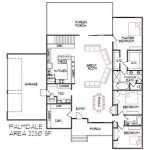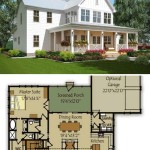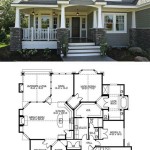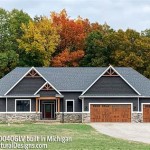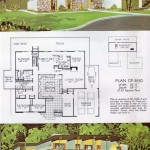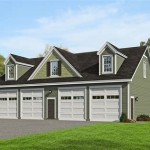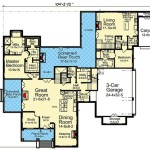Small Lake Homes Floor Plans: Maximizing Space and Views
The allure of lakeside living is undeniable. The tranquility of the water, the recreational opportunities, and the stunning views create a desirable lifestyle. However, lakefront property often comes at a premium, requiring homeowners to consider smaller footprints for their dwellings. This necessitates careful planning and efficient design, making small lake home floor plans a crucial aspect of realizing the dream of lakeside living. Successfully navigating this process requires understanding the key considerations and design strategies that maximize space, functionality, and enjoyment of the lake environment.
Small lake home floor plans demand a thoughtful approach to design. Every square foot must be utilized effectively, and the layout should prioritize living spaces and views. The selection of a suitable floor plan depends heavily on the homeowner's lifestyle, budget, and the specific characteristics of the lakefront property. Examining these diverse factors enables effective choices that ensure the ultimate satisfaction and a high-utility living experience.
Prioritizing Views and Natural Light
One of the primary reasons for choosing a lake home is the view. Floor plans should capitalize on this asset by incorporating large windows, sliding glass doors, and strategically placed decks or patios. These elements not only provide stunning vistas but also flood the interior with natural light, creating a bright and airy atmosphere. The orientation of the house on the lot is also critical. Maximizing southern exposure can help reduce heating costs in colder climates, while strategically placed overhangs can provide shade during the hottest parts of the day. A well-designed plan considers the sun's path throughout the year to optimize natural light and minimize glare.
Consider open-concept designs to further enhance the view. By eliminating walls between the living room, dining area, and kitchen, the available space feels larger and the view becomes accessible from multiple points within the home. A wall of windows facing the lake becomes a focal point, creating a seamless connection between the interior and the exterior. Careful attention should be paid to window placement toFrame to avoid obstructing views with furniture or other architectural elements.
Beyond the main living areas, consider incorporating lake views into bedrooms as well. A bedroom with a private balcony overlooking the water can provide a serene retreat. Even smaller details, such as a strategically placed window in the bathroom, can add to the overall experience. When designing window placement, balancing the desire for views with the need for privacy is essential, particularly if the property is located near other homes.
Interior design plays a significant role in maximizing natural light. Light-colored walls and ceilings reflect more light, making the space feel brighter. Mirrors can also be used strategically to bounce light around the room. Avoid using heavy drapes or dark furniture, as these can absorb light and make the space feel smaller and darker.
Optimizing Space with Smart Design Solutions
In small lake homes, efficient use of space is paramount. Multifunctional furniture, built-in storage, and open-concept layouts are key strategies for maximizing every square foot. Consider furniture that can serve multiple purposes, such as a sofa bed for accommodating guests or a coffee table with built-in storage. Build-in shelves and cabinets are excellent for creating storage without taking up valuable floor space. Think vertically, utilizing wall space for shelves and cabinets rather than relying solely on floor-standing furniture.
Open-concept floor plans, as mentioned earlier, are particularly effective in small lake homes. By combining the living room, dining area, and kitchen into one large space, the area feels more expansive and inviting. This also facilitates social interaction, making it easier to entertain guests. When designing an open-concept space, consider defining different zones with rugs, furniture placement, or subtle changes in flooring. This creates a sense of separation without sacrificing the open feel.
Another effective strategy is to minimize hallways. Hallways take up valuable square footage that could be used for living space. Consider designing a floor plan that minimizes the need for long corridors, instead opting for direct access between rooms. Pocket doors are a useful solution for saving space in areas where a traditional swinging door would be cumbersome. They slide into the wall, eliminating the need for door swing clearance.
The use of high ceilings can also make a small space feel larger. A vaulted ceiling or cathedral ceiling creates a sense of airiness and allows for more natural light to enter the room. Consider incorporating skylights to further enhance the natural light. When designing a two-story lake home, a well-placed staircase can become a focal point while also providing efficient access to the upper level. Consider using open stairs or a spiral staircase to minimize the visual impact.
Outdoor living spaces, such as decks, patios, and porches, can effectively extend the living area of a small lake home. These spaces provide opportunities for outdoor dining, relaxation, and entertaining, making the most of the lakefront setting. Consider a covered porch or screened-in porch to provide protection from the elements, allowing for enjoyment of the outdoors even in inclement weather.
Considering Functionality and Lifestyle
The floor plan should reflect the homeowner's lifestyle and specific needs. Consider how the home will be used, both on a daily basis and for entertaining guests. If the homeowners enjoy cooking, a well-equipped kitchen with ample counter space is essential. If they enjoy water sports, a mudroom or entryway with storage for gear is a practical addition. If the home will be used as a vacation rental, consider features that cater to renters, such as multiple bedrooms and bathrooms.
Think about the flow of traffic through the house. The floor plan should allow for easy movement between rooms, avoiding bottlenecks and dead ends. Consider the proximity of the bedrooms to the bathrooms and the kitchen to the dining area. The placement of laundry facilities should also be carefully considered. Ideally, the laundry room should be located near the bedrooms or the kitchen for convenience.
Accessibility should also be a key consideration, particularly for homeowners who plan to age in place. Features such as wider doorways, grab bars in the bathrooms, and a zero-entry shower can make the home more accessible for people with mobility limitations. A single-story floor plan is the most accessible option, but if a two-story home is desired, consider installing an elevator or lift.
The size and layout of the bedrooms should be tailored to the needs of the occupants. Consider whether a master suite with a private bathroom and walk-in closet is desired. Guest bedrooms should be comfortable and inviting, with ample storage space. The number of bathrooms should be adequate for the number of occupants. A half-bath near the living areas is convenient for guests.
Finally, consider the overall aesthetic of the home. The floor plan should complement the architectural style of the house and the surrounding environment. Choose materials and finishes that are durable, low-maintenance, and aesthetically pleasing. A well-designed small lake home should be both functional and beautiful, providing a comfortable and enjoyable living space for years to come.
Integrating green building practices into the floor plan and construction process is progressively important. Consider sustainable materials, energy-efficient appliances, and water-saving fixtures. Solar panels can provide renewable energy, reducing the home's carbon footprint. A well-insulated home will require less energy for heating and cooling, saving money on utility bills. Green building practices not only benefit the environment but also enhance the comfort and health of the occupants.

Open Concept Small Lake House Plans Houseplans Blog Com

Small Cabin Floor Plan 3 Bedroom By Max Fulbright Designs

3 Bedroom Lake Cabin Floor Plan Max Fulbright Designs

Open Concept Small Lake House Plans Houseplans Blog Com

Small Lake House Plans Esther
Country Style House Plan 4 Beds 3 Baths 1966 Sq Ft 137 375 Houseplans Com

Small House Plan Tiny Cottage Home Or Guest 800 Sq Ft
Lake House Plans Blog Homeplans Com

Open Concept Small Lake House Plans Houseplans Blog Com

Pin Page

